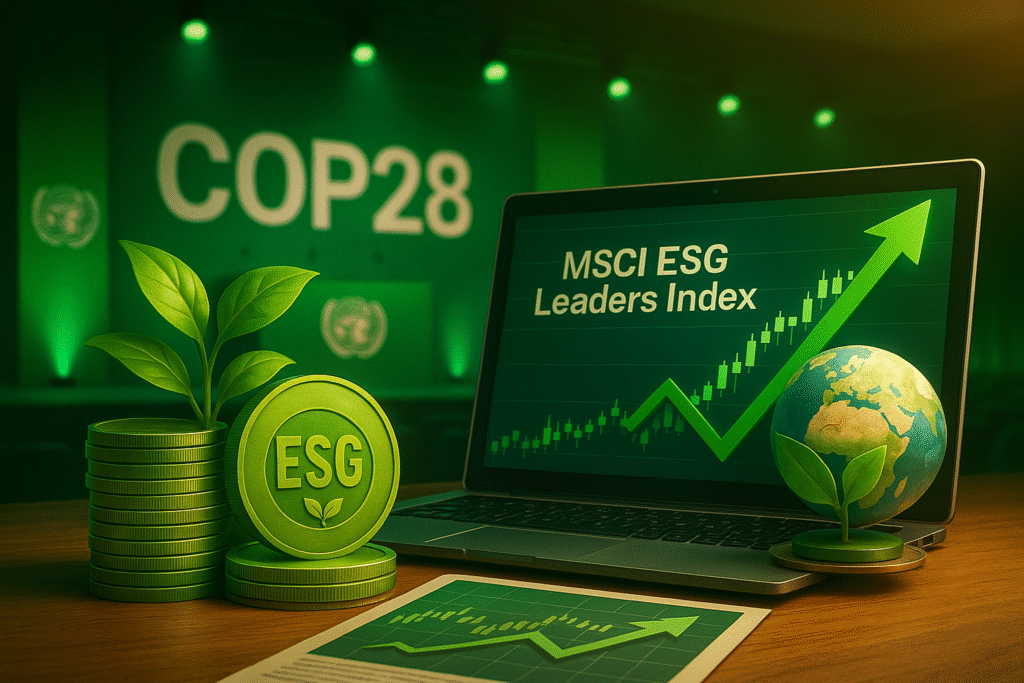COP28 pledges spark ESG fund inflows
World leaders in Dubai agreed to triple renewable power by 2030. The pledge arrived with clear national action plans. Asset managers reacted fast. They pumped $6 billion into ESG equity funds during the two weeks after the summit, showcasing an incredible surge of inflows into ESG funds. That marks the biggest surge since 2021, demonstrating significant ESG fund inflows.

How the MSCI ESG Leaders Index reacted
The index gained four percent in the same span, beating the broad MSCI World by two points. Green-power groups led. Ørsted rose nine percent, while Vestas added seven. U.S. solar maker First Solar rallied six. Banks with weak carbon records lagged and trimmed gains. The index now sits near a twelve-month high, partly due to the influence of ESG fund inflows on market sentiment.
Sector shifts inside the benchmark
Clean energy now makes up 7.5 percent of the ESG basket, up from six percent before the rally, reflecting flows into ESG funds altering sector allocations. Information tech still tops the chart at 28 percent, yet its share slipped a hair. The index also added a Dutch chemical firm after it hit fresh carbon targets. At the same time, MSCI removed two Asian coal miners for failing new screen rules. These moves show how small rules can impact capital flows, notably through ESG fund inflows.
Investor behavior amid ESG fund inflows
Large European pension funds led the buying wave. They raised their strategic green-equity target from six to eight percent. In the U.S., retail investors used robo-advisers to rotate cash into ESG ETFs. Options data confirm the shift. Call volume on the top ESG ETF doubled versus the fifty-day average, while put volume held flat. Traders see more upside but protect less on the downside, influenced by ESG fund inflows dynamics.
Can the momentum last?
Three drivers will decide. First, bond yields. If central banks cut rates in late 2025, clean-tech firms will enjoy lower funding costs. Second, policy follow-through. Each nation must spell out grid plans by next April. Delays could cool sentiment related to ESG fund inflows. Third, earnings. Solar panel prices keep falling, squeezing margins. Yet storage demand is rising, and new subsidy rules in the U.S. extend tax credits for ten years. Most analysts still forecast double-digit revenue growth for green-power groups through 2027.
Many risks remain. A sharp oil-price drop could pull cash back to hydrocarbon majors. Geopolitical shocks may also test supply chains for rare-earth metals used in turbines and EVs. Still, long-run trends point to rising energy demand and tighter emission caps.
The recent inflows to ESG funds highlight a clear shift. Investors want exposure to firms that can thrive in a low-carbon world. Index rebalances will keep shaping that path, adding leaders and removing laggards as rules evolve. Staying alert to policy and market shifts will help investors ride the next leg of the sustainable-growth story driven by ESG fund inflows.